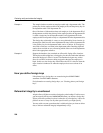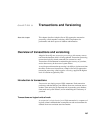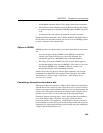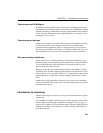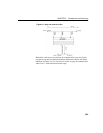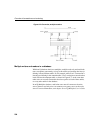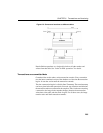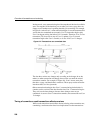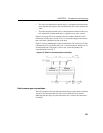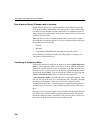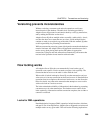
Overview of transactions and versioning
292
Unlike a camera, though, IQ does not need to make a copy of the entire object
each time the image changes. Instead, it copies only the parts of the image—
the database pages—that have changed. Database pages that have not changed
are shared among all active versions in the database.
IQ takes its snapshot when a transaction begins. Throughout the transaction, a
user who reads from the object sees the unchanged image, or snapshot version.
Table-level versioning
In Adaptive Server IQ, at the user-visible level, the unit of versioning is the
table. Table-level versioning makes sense for Adaptive Server IQ for these
reasons:
• IQ data structures aggregate data for columns at the table level.
• Most IQ insertions and deletions write data table-wide.
With table-level versioning, Adaptive Server IQ can control access to the data
at the level where write operations occur, and where query results are focused.
Internally, however, data is versioned at the page level. This approach helps
conserve system resources.
A given IQ table may consist of millions of pages of data. When you update
that table, you may be writing to only a small percentage of those pages. It
would require a vast amount of disk space to maintain a complete copy of each
version of an entire table. Adaptive Server IQ saves on disk space by allowing
table versions to share pages that are not being updated.
One writer and multiple readers at the table level
On a given table, IQ permits only one user to have write access for doing
insertions and deletions, and multiple readers to issue queries concurrently.
Imagine a situation such as the one shown in Figure 8-1. First, User 1 begins a
transaction and starts to insert data into the
customer table. As long as User 1's
transaction remains open, no other user can write to the
customer table. Any
transaction that attempts to write to the
customer table receives an error until
User 1's transaction commits.
In Figure 8-1, User 2 gets an error for attempting to write before User 1's
transaction commits. User 2's application determines whether to roll back the
transaction, or to try writing to a different table. However, User 2 cannot write
to the
customer table again in the same transaction.



